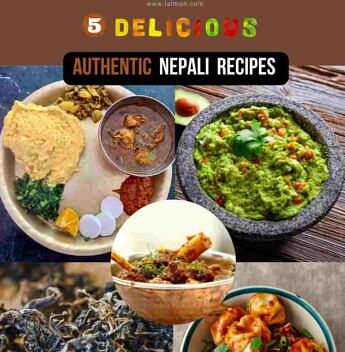Many different items can be used for puja samagri, and it can be difficult to know which ones are the right ones to choose. Here are a few tips to help you select the right puja samagri for your needs.
1. You first need to decide what type of puja you will be performing. There are many different types of pujas, each with its specific requirements.
2. Once you know what type of puja you will perform, you can narrow down the list of potential items.
3. Make sure you choose items of the highest quality. Puja samagri is not something you want to skimp on, as it can affect the quality of your puja.
4. Once you have selected the right puja samagri, make sure that you follow the instructions carefully. This will ensure that you get the most out of your puja.
The importance of puja samagri in Hinduism
Puja samagri plays a very important role in Hinduism. It is used to offer prayers and thanksgiving to the various deities. The items used for puja samagri are usually blessed by a priest before use. Puja samagri is also used to make offerings to the gods and goddesses.
What are different puja samagri, and What do each of the puja samagri items represent?
Some of the items that could be considered puja samagri in Indian and Nepali cultures include:
Puja thali (Aarti plate)
Puja thali is a special plate on which all of the offerings are placed. An aarti plate holds the aarti, or offering of light, during puja. It is usually made of brass or copper and has multiple compartments for holding the different elements of the aarti. The puja thali is often decorated with designs such as swastikas or lotuses.
Pooja bell
The puja bell is used to announce the start of the puja ceremony. Bells are often used while chanting mantras or prayers.
Agarbatti or incense sticks (Dhoop)
Agarbatti is burned during puja as an offering to the deity. The incense sticks are made from herbs, gums, and resins. It is burned on a special stand during puja. They are also used to purify the air and create a pleasant atmosphere.
Diyo (Deepak or Light)
A Deepak is a type of lamp that is used during puja. It is usually made of brass or copper and is filled with ghee (clarified butter) or oil.
Flowers
Fresh flowers are often used as decorations during puja. They can also be offered to the deity as part of the puja ritual.
Fruits and sweets
Fruits and sweets are often offered as part of the puja ceremony. They can be used as decorations or given to the deity as an offering.
Water
Water is used in puja to purify the area and the participants. It is also used as an offering to the deity.
Milk
In many cultures, milk is considered a sacred substance and is often used in puja as an offering to the deity.
Panchamrut (a mixture of five holy drinks)
Panchamrit is a mixture of five sacred substances: milk, curd, ghee, honey, and sugar. It is used in puja as an offering to the deity.
Prasad
Prasad is food that has been offered to the deity and then distributed to the participants of the puja. It is considered to be a blessed food.
Puja books
Puja books are used as a reference during the puja ceremony. They often contain the mantras or prayers that are recited during puja.
Sacred items such as statues, paintings of deities, or idols of deities
Sacred items such as statues or paintings of deities are often used in puja to connect with the deity. They can also be used as decorations during the ceremony.
Gangajal (Holy water from a river or temple tank)
Gangajal is water sanctified by a holy river or temple tank. It is often used in puja to purify the area and the participants.
Janai
Janai is a sacred thread made of cotton or wool. The Janai is worn by Hindus on their right wrist and is considered very auspicious. It is generally white with red or blue stripes running along the sides.
Havan Samagri (havan ingredients)
Havan Samagri is a mixture of herbs, gums, and resins used in the havan, or fire ceremony. It is often used as an offering to the deity.
Kalasa (Kalash, pot of holy water)
A Kalasa is a pot of sanctified water that is used in puja. It is often placed in front of the deities during the puja ceremony.
Puja Chandan (Sandalwood paste or powder)
Chandan is a type of paste that is made from sandalwood and other ingredients. It is often used in puja as an offering to the deity. It is also used to purify the area and the participants.
Shringar Samagri (items for dressing the deity)
Shringar Samagri are items that are used to dress the deity. They often include flowers, jewelry, and clothing.
Yantra (Sacred geometry)
A yantra is a sacred geometric diagram that is used in puja. It is often used as a way to connect with the deity.
Rice
Rice is often used as an offering to the deity during puja.
Tulsi (Holy basil)
Tulsi is a type of sacred basil that is often used in puja. It is considered an auspicious plant and is often used as an offering to the deity.
Sindoor (Kumkum, Vermilion powder)
Kumkum is a type of vermilion powder that is used in puja. It is auspicious and is used to mark the forehead of the participants.
Conch shell
The conch shell is often used in puja to purify the area and the participants.
Ghee (clarified butter)
Ghee is an important part of any puja or havan. It is used for cooking and as fuel for the sacrificial fire. Ghee is said to have cooling properties and thus helps keep the body cool.
Milk
Milk is an essential part of any puja. It is used to cleanse the body and purify the mind.
Yogurt
Yogurt is another important part of the puja. It is used to cleanse the body and purify the mind.
Sugar
Sugar is used in puja to sweeten the mind and body. It is also used to nourish the body and purify the blood.
Honey
Honey is used in puja to purify the body and mind. It is also used to nourish the body and purify the blood.
The ones listed above are some of the common items that are used in puja. Each item has a specific purpose and meaning. Puja is a complex ritual with many steps. The items used in puja can vary depending on the type of puja being performed.
FAQs
What is the purpose of puja samagri?
Puja samagri is used as an offering to the deity during puja. It is also used to purify the area and the participants.
What are the different types of puja samagri?
There are many different types of puja samagri. Some of the most common items include sacred items such as statues or paintings of deities, gangajal (holy water from a river or temple tank), Janai (sacred thread), havan samagri (havan ingredients), kalasa (Kalash, pot of holy water), puja Chandan (sandalwood paste or powder), shringar samagri (items for dressing the deity), yantra (sacred geometry), rice, tulsi (holy basil), sindoor (kumkum, vermilion powder), conch shell, ghee (clarified butter), milk, yogurt, sugar, and honey.
How do I choose the right puja samagri for my puja?
The type of puja samagri you use will depend on the type of puja you perform. For example, if you are performing puja to connect with a specific deity, you will need to use associated items. If you are performing a puja for purification, you will need to use items associated with cleansing. You should consult a priest or guru who can help you choose the right puja samagri for your needs.
What are the benefits of using puja samagri?
Puja samagri can have many benefits. It can help purify the body and mind, connect you with the divine, and bring blessings into your life.
How should I store my puja samagri?
Puja samagri should be stored in a clean, dry place. It is important to keep the items clean and free from dust.
















 Lalmon LLC. All rights reserved
Lalmon LLC. All rights reserved